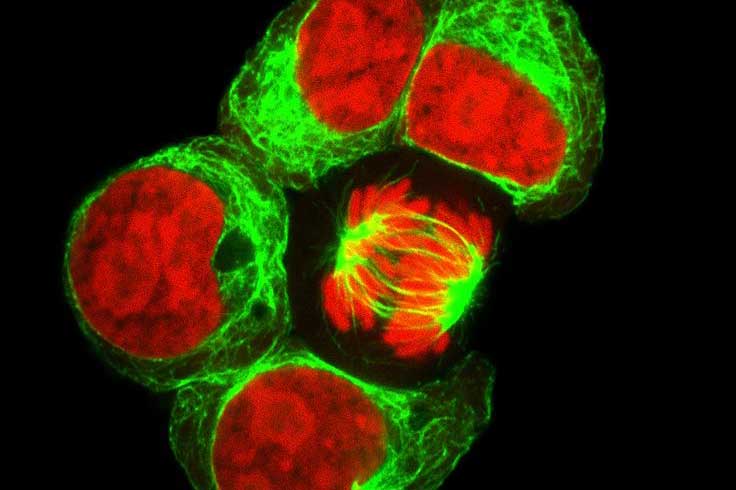
Hematopoietic stem cells (HSCs) have long been regarded as the granddaddy of all blood cells. After we are born, these multipotent cells give rise to all our cell lineages: lymphoid, myeloid and erythroid cells. Hematologists have long focused on capturing HSCs’ emergence in the embryo, hoping to recreate the process in the lab to provide a source of therapeutic blood cells.
But in the embryo, oddly enough, blood development unfolds differently. The first blood cells to show up are already partly differentiated. These so-called “committed progenitors” give rise only to erythroid and myeloid cells — not lymphoid cells like the immune system’s B and T lymphocytes.
Now research led by Harvard Medical School Dean George Q. Daley sheds light on this process.
Researchers in Daley’s lab, part of Boston Children’s Hospital’s Stem Cell Program, wanted to know: Does nature deliberately suppress blood cell multipotency in early embryonic development? And could this offer clues about how to reinstate multipotency and more readily generate different blood cell types?
To test these ideas, Daley, study first author Linda Vo, a former graduate student in Daley’s lab, and their colleagues started out by creating committed myelo-erythroid progenitors in the lab from induced pluripotent stem (iPS) cells—adult cells reprogrammed to the earliest state of differentiation. They then screened these cells for factors that suppress multipotency, using short hairpin RNAs to knock down expression of 20 different proteins, one by one.
EZH1: A target for blood cell creation?
As reported Jan. 17 in Nature, the screen came up positive for a protein called EZH1. When it was knocked down, the progenitors gained the ability to differentiate into B and T cells. The team then went on to show that mouse embryos deficient in EZH1 generated HSCs earlier in development and more robustly.
Further experiments showed that EZH1 acts to suppress the expression of genes involved in HSC, lymphoid cell development and T-cell activation.
“EZH1 is the molecular clue to how multipotency is repressed in embryonic blood progenitors,” said Daley, who recently led the first successful effort to create HSCs and other blood progenitors from iPS cells.
“These insights not only help to explain a fascinating conundrum in developmental biology but will contribute to our ability to engineer HSCs and T cell populations in vitro. That, in turn, could advance creation of ‘off the shelf’ T cells for immunotherapy.”
While we now know how multipotency is repressed, why it’s suppressed remains an open question. “Embryos need red blood cells to carry oxygen and some myeloid cell functions, but they don’t need lymphocytes because they depend on the maternal immune system,” Daley said. “Nature is being parsimonious here.”
Linda Vo, first author on the paper, is now at USCF Medical Center. Coauthors were Melissa Kinney, Deepak Jha, Areum Han and Marcella Cesana, all HMS research fellows in biological chemistry and molecular pharmacology at Boston Children’s, Stuart Orkin, the David G. Nathan Distinguished Professor of Pediatrics at Boston Children’s and Daley Lab research assistants Jessica Barragan and Patricia Sousa; Xin Liu, Yuannyu Zhang and Jian Xu of University of Texas Southwestern Medical Center; Zhen Shao of the Shanghai Institute of Biological Sciences; Trista North, HMS associate professor of pathology at Beth Israel Deaconess Medical Center; and Sergei Doulatov of the University of Washington, Seattle. George Daley, the paper’s senior author, is also affiliated with the Division of Hematology/Oncology, Boston Children’s and Dana-Farber Cancer Institute, the Broad Institute of MIT and Harvard, and the Manton Center for Orphan Disease Research at Boston Children’s.
Supporters of this work include the National Institute of Diabetes and Digestive and Kidney Diseases (R24-DK092760, R24-DK49216), the National Heart, Lung and Blood Institute (U01-HL100001, R01HL04880), the National Institutes of Health (R24OD017870-01), a National Science Foundation Graduate Research Fellowship and the Howard Hughes Medical Institute. See the paper for complete author and funding information.
Adapted from a post on Vector, the Boston Children’s science and clinical innovation blog.


